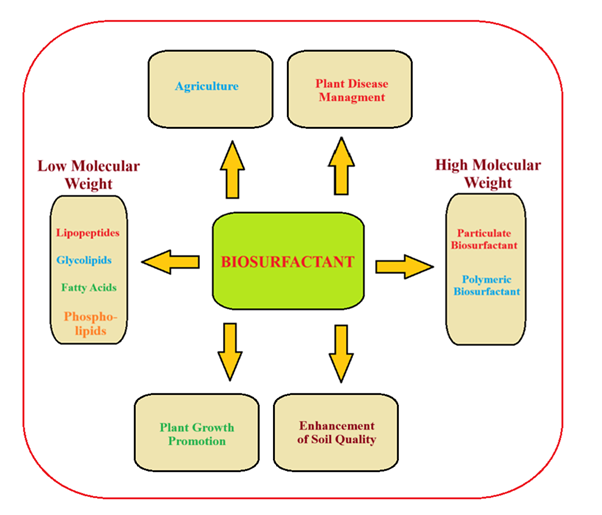
Amino Acid-Based Biosurfactants: Promising and Ecofriendly Biomolecules for Attaining Sustainable Agriculture and Environmental Safety
Nizamul Haque Ansari, Shumaila Shahid, Mohd Shoeb Khan, Navaid Zafar Rizvi, S. M. Shakeel Iqubal, Amal Bahafi
Том 87 №1
263 просмотров;
Biosurfactants are one of the recently investigated biomolecules that have enormous applications in many fields including agriculture. As there is a need to develop less toxic, and environmentally friendly surfactants, therefore, amino-acid-based biosurfactants that are produced from renewable raw materials are of great demand nowadays and can be used as an alternative to conventional chemical surfactants. The negative effects of chemical surfactants present in agrochemicals and modern detergents can damage human health and the environment, thus there is a crucial requirement to explore innovative, well planned, as well as cost-effective natural products for the welfare of humanity. Biodegradable surfactants created through green chemistry, specifically amino acid-based surfactants (AABS), are a favourable alternative to avoid these risks. Since amino acids (AAs) are inexhaustible compounds, therefore biosurfactants based on AAs have abundant potential as eco-friendly.and environmentally friendly substances. Their higher biodegradation ability, low or even no toxicity, temperature stability, and tolerance to pH fluctuations make these biosurfactants preferable over chemical surfactants. In modern agriculture, most chemical pesticides and fertilizers used are frequently associated with numerous environmental issues. Hence, the development of green molecules as biosurfactants has a promising role in this regard to ensure agricultural sustainability. Biosurfactants can be harnessed for plant pathogen management, plant growth elevation, improving the quality of agricultural soil by soil remediation, degradation of complex hydrocarbons, increasing bioavailability of nutrients for advantageous plant-microbe interactions, and improving plant immunity, hence, they can supersede the grim synthetic surfactants which are presently being used.